The Root Greening Response in Arabidopsis
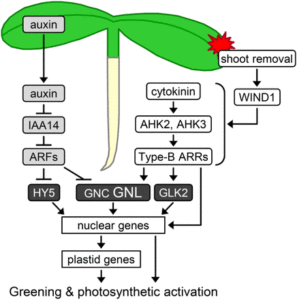 Based on various developmental, environmental, and hormonal cues, proplastids can be converted into different types of plastids within cells. In Arabidopsis, chloroplast development is repressed in roots via auxin signaling. When roots are detached from the shoot, and its supply of auxin, roots develop chloroplasts. The expression levels of key chlorophyll biosynthesis genes are correlated with chlorophyll content in roots, which suggests that transcriptional regulation plays a central role in controlling chloroplast development in roots. Transcription factors that act as positive regulators of chloroplast differentiation include LONG HYPOCOTYL5 (HY5), GOLDEN2-LIKE (GLK), and class B GATA transcription factors (B-GATAs). How are the expression levels of these transcription factors affected by shoot removal, and what roles do auxin and cytokinin play in regulating the levels of their expression? Kobayashi et al. () report that roots deficient in auxin signaling show an up-regulation of photosynthesis-associated genes along with increases in the expression of GLK2 and HY5. In wild-type Arabidopsis roots, shoot removal also activates ARABIDOPSIS RESPONSE REGULATOR (ARR)-mediated cytokinin signaling. ARR1 and ARR12 are essential for up-regulating nucleus- and plastid-encoded genes associated with chloroplast development in detached roots. The overexpression of B-GATAs promotes root greening, as does shoot removal, dependent on the light signaling transcription factor, HY5. Auxin represses the root greening response independent of ARR signaling. GNC-LIKE (GNL), a B-GATA, is strongly up-regulated in detached roots via ARR1 and ARR12 but is repressed by auxin, suggesting that GNL may function at the point of convergence of cytokinin and auxin signaling in the root greening response.
Based on various developmental, environmental, and hormonal cues, proplastids can be converted into different types of plastids within cells. In Arabidopsis, chloroplast development is repressed in roots via auxin signaling. When roots are detached from the shoot, and its supply of auxin, roots develop chloroplasts. The expression levels of key chlorophyll biosynthesis genes are correlated with chlorophyll content in roots, which suggests that transcriptional regulation plays a central role in controlling chloroplast development in roots. Transcription factors that act as positive regulators of chloroplast differentiation include LONG HYPOCOTYL5 (HY5), GOLDEN2-LIKE (GLK), and class B GATA transcription factors (B-GATAs). How are the expression levels of these transcription factors affected by shoot removal, and what roles do auxin and cytokinin play in regulating the levels of their expression? Kobayashi et al. () report that roots deficient in auxin signaling show an up-regulation of photosynthesis-associated genes along with increases in the expression of GLK2 and HY5. In wild-type Arabidopsis roots, shoot removal also activates ARABIDOPSIS RESPONSE REGULATOR (ARR)-mediated cytokinin signaling. ARR1 and ARR12 are essential for up-regulating nucleus- and plastid-encoded genes associated with chloroplast development in detached roots. The overexpression of B-GATAs promotes root greening, as does shoot removal, dependent on the light signaling transcription factor, HY5. Auxin represses the root greening response independent of ARR signaling. GNC-LIKE (GNL), a B-GATA, is strongly up-regulated in detached roots via ARR1 and ARR12 but is repressed by auxin, suggesting that GNL may function at the point of convergence of cytokinin and auxin signaling in the root greening response.



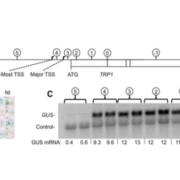

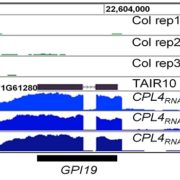
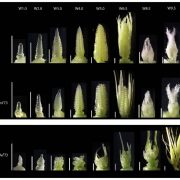
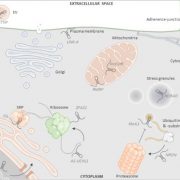


Leave a Reply
Want to join the discussion?Feel free to contribute!